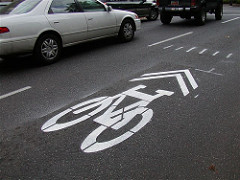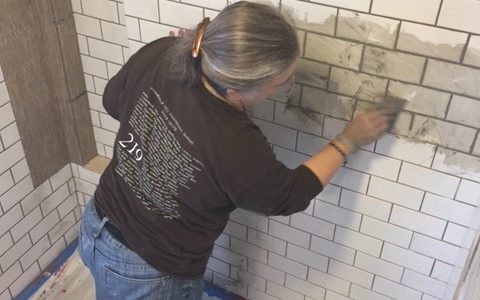
Resiliency Riff
Resilience in our daily lives:
Public transit, sidewalks, electric infrastructure, bike lanes all lead to resiliency, so everyone has more than one way to get somewhere, so long as the networks of options lead to hospitals, schools, shopping areas and to and from downtown. This brings economic and health security to all levels of society.
Yoga is resiliency, making sure your joints and tendons are flexible and strong, ensuring that tough work will not break your connections even if there is strain. Any continual care for your health, be it exercise or nutrition, tuning of mental faculties, or affirmation of spiritual and emotional processes. These are all aspects of resiliency, even the simplest of actions; brushing your teeth twice a day.
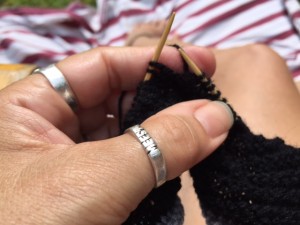 Darning socks, sewing on buttons, hemming pants and making any clothing from “scratch” s resiliency in practice. As is gardening, cooking, preserving and composting (to bring it full circle).
Darning socks, sewing on buttons, hemming pants and making any clothing from “scratch” s resiliency in practice. As is gardening, cooking, preserving and composting (to bring it full circle).
Hanging a painting, oiling a hinge, painting a wall, clearing clogged pipes, building shelves, patching holes and tiling showers all speak to resilience. Cleaning, oiling and doing minor bike repairs? The same. Diligently maintaining your car? Also awesome.
Community is resiliency, ensuring that if there is a fire or a flood or accident your neighbor will call you, or lend a hand. Know your local cops, and make sure to have places and people if you need shelter, and that you will be there as well for them, if needed. And even if you don’t have one of the skills mentioned above, the interdependence inherent in community means you can find someone who does. Help each other, and be resilient.
Some more items, slightly more technical:
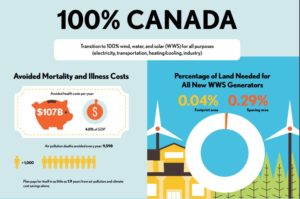 Renewable energy, of all sorts. Diversity means flexibility and a network of options for use in all sorts of applications, on-site, community based and remote.
Renewable energy, of all sorts. Diversity means flexibility and a network of options for use in all sorts of applications, on-site, community based and remote.
Green Infrastructure, whereby we use nature based systems such as bioswales, porous paving, raingardens, green roofs, and marshes to create layers of systemic solutions to keep water where it falls and clean it in the process. With no additional power or chemicals.
Passive House design and construction, which focuses on three things 1) exceptionally tight buildings 2) nearly no thermal bridging that would cause heat loss, and 3) properly designed mechanical ventilation. This is resilient because the buildings can provide shelter-in-place at livable conditions for several days when the power goes out, even in the coldest of winters.
Complete streets is the exemplification of community and absolute access to safe, diverse transportation options. A town whose streets allow safe walking, biking, buses, cars, motorized wheelchairs, fast movers and slow movers, blind walkers, families with strollers, dogs, pull carts for shopping, skateboards, and anything else I have forgotten, is powerful and resilient.
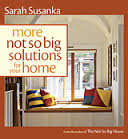 Universal Design is the not-so-common sense to build homes, apartments, and communities with a focus on aging-in-place. This secures economic resiliency as well as the resilience of individuals. When the architect realizes that it’s not only the 80-year-old with a cane that appreciates a 3’ wide door with a “resting shelf” for the groceries nearby, but the 30 something who broke a leg, everything becomes more flexible and accommodating.
Universal Design is the not-so-common sense to build homes, apartments, and communities with a focus on aging-in-place. This secures economic resiliency as well as the resilience of individuals. When the architect realizes that it’s not only the 80-year-old with a cane that appreciates a 3’ wide door with a “resting shelf” for the groceries nearby, but the 30 something who broke a leg, everything becomes more flexible and accommodating.
Elimination of toxins in products (the big one) which is imperative for resiliency. Every known carcinogen (and we know a quite a few) that is in a product will cause trouble forever. Every toxin that burns in a fire affects everyone breathing nearby, and contaminates shared water resources. Each flood puts toxic cleaners and toxic waste and toxic fuels into the water that is shedding to the sea and infiltrating into our soils. There is no getting rid of things once we create them and sell them. They are either in-use or abandoned in a landfill because they are too dangerous to recycle, and in both of those cases, they are a risk to us all. Resiliency demands elimination of toxins.
Resiliency will demand elimination of toxins.
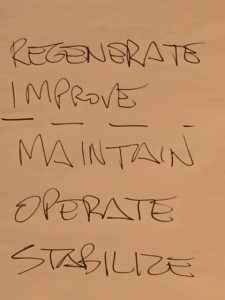 Working toward resiliency causes us to step beyond the mantra of “do no harm” right into a goal of “do some good”. I challenge any of you to come up with examples where this effort causes more trouble than the solution is worth. In most cases, it takes serious up-front thought investment, but little in the way of increased cost in implementation. It is resilient specifically because it seeks to solve several problems without creating any new ones and in this way is smart, future focused and fiscally righteous.
Working toward resiliency causes us to step beyond the mantra of “do no harm” right into a goal of “do some good”. I challenge any of you to come up with examples where this effort causes more trouble than the solution is worth. In most cases, it takes serious up-front thought investment, but little in the way of increased cost in implementation. It is resilient specifically because it seeks to solve several problems without creating any new ones and in this way is smart, future focused and fiscally righteous.
Be righteous, and be greener,
Jodi
Be the first to like this post (no login required)

